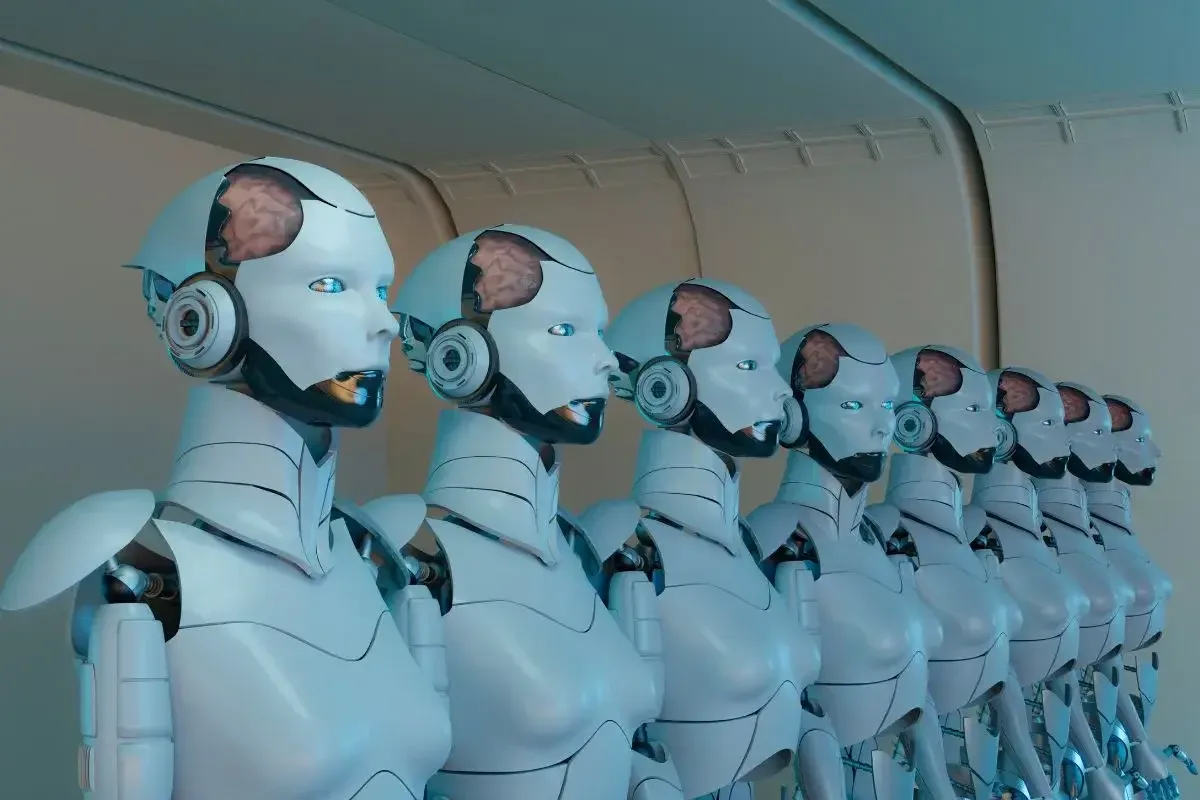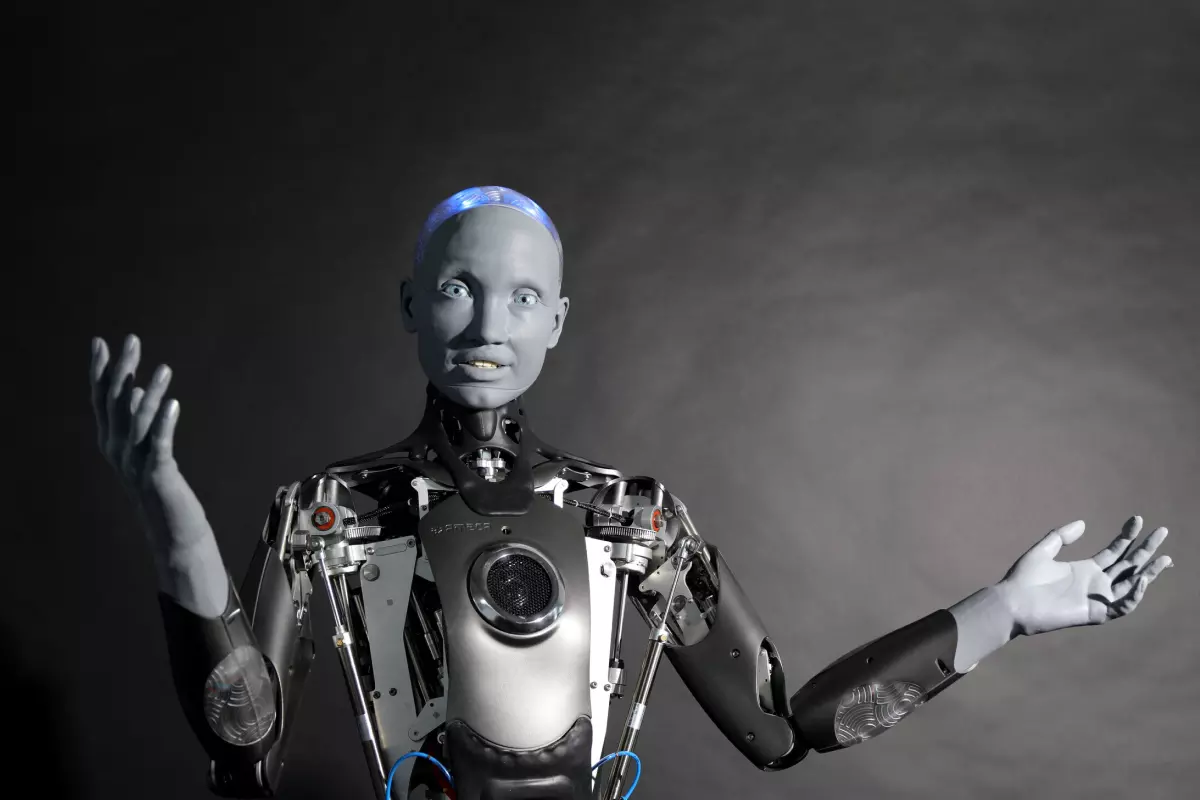A ‘special’ school recently opened its doors in Shanghai.
A school with no human students. All the pupils are robots that have come to learn how to increase and improve their abilities. Robots trained by real teachers. This large training centre enables the machines to acquire the data they need to interact with their environment.
‘It’s not quite a school as we imagine it, with classrooms and teachers. It’s a large building covering 4,600 square metres,’ explains Eudeline Boishult, RTBF’s correspondent on site. ‘It is divided into several areas. There is a factory area, a computer area, and also a bedroom area. There are about a hundred humanoid robots that learn to perform tasks on a daily basis. For example, in the bedroom, they learn to fold trousers or organise the desk. And in the factory area, they do welding.’
In the kitchen, they are taught how to cook and wash dishes; in the living room, they clean and tidy up.
The robots do not learn on their own. Each machine is accompanied by a teacher, a real-life tutor. A man equipped with a virtual reality headset and controllers. With this equipment, he performs a gesture and shows it remotely to the robot so that it can perform it.
‘For example, the human will pick up an object and the robot will be able to repeat that gesture,’ adds Eudeline Boidhust. “All these gestures have to be repeated tirelessly, 200 times before the robot can actually acquire the skill. The aim of this training is to enable the robot to interact with its environment completely autonomously, without the need for human assistance.”
Robot school: a technological race
China wants to improve its performance and remedy its demographic problem. The development of robots has therefore become a key focus of its policy. For years, the United States and Japan were the pioneers. Today, Beijing is working hard to catch up.
This argument is confirmed and expanded upon by Eudeline Boishult: ‘China wants to modernise its industry on the one hand, and on the other, it wants to reduce its dependence on foreign technologies, particularly American ones. So the Chinese government has invested hundreds of billions of euros to propel China to the forefront of this market.’
For the moment, humanoid robotics is in the development phase. Most of the robots presented at conventions, major trade fairs and large events are not in service because they are not powerful enough. The main problem is the battery, which lasts from one to several hours. Experts estimate that it will be another 5 to 10 years before the first humanoid robots replace some humans in factories.
‘It may still seem a long way off,’ adds the RTBF correspondent, ‘but some governments and investors have realised that the market is very promising. As a result, we are witnessing a global race to develop these humanoid robots. As for China, it has opted for an industrial strategy that sets it apart from its American and Japanese competitors. It mass-produces robots that are inexpensive, low-cost and, above all, versatile.’ .
Robots to assist the elderly in China
Furthermore, the Chinese population is facing demographic challenges. By 2035, people over the age of 60 will represent nearly a third of the population, according to the Economist Intelligence Unit.
For Eudeline Boishult, China has not prepared for the ageing of its population: ‘People over 65 already represent 15% of the Chinese population today. There are very few retirement homes, and the tradition of keeping parents at home is gradually breaking down. Young Chinese people prefer to focus on their own lives rather than caring for their elders.’
China therefore sees robots as a potential solution to assist these tens of millions of elderly people.
The industry has understood this. Investments in what is known as the senior economy are legion. The company Unix AI, for example, launched a wheeled robot in 2024 that can perform simple tasks such as cleaning the floor, taking out the rubbish and loading the dishwasher. The machine is intended for elderly people who have difficulty performing these tasks. Ultimately, and this may be frightening, the robot could learn to test blood pressure or even prepare medication for a senior citizen.

A colossal budget
The investments are estimated to be in the millions of euros. But the Chinese government and private Chinese companies want to keep the industrial secrets surrounding these robots under wraps.
According to the RTBF correspondent, this can be explained as follows: “While the tutor teaches the robot what to do, there are operators behind the scenes who collect data and analyse it to understand and correct the robots’ behaviour. To give you an idea, it took no less than 40 people and hundreds of hours to collect the data necessary for Optimus, Tesla’s humanoid robot, to perform the simple task of putting a battery in a box.”
Currently, these robots do not have optimal or perfect training. They do not know how to react to unfamiliar scenes or objects, nor do they know how to perform a sequence of actions. ‘This school also aims to collect around 10 million pieces of data by the end of 2020,’ adds Eudeline Boishult. “Ultimately, the authorities would like the data collected at this training centre to be made available to private companies. This would also reduce the cost of the school and robot training and would allow all the data collected to be disseminated.”
The Chinese market for humanoid robots was already worth €350 million in 2024 and is expected to reach €2.1 billion by 2025. It is even expected to reach €11.35 billion by 2030.
Ici le monde will also take you to Ukraine, to the front line in the city of Kherson, where men are fighting and resistance is being organised.
The programme will also return to North Korea’s comments on the sidelines of the United Nations conference, in which it stated that Pyongyang will never give up its nuclear programme.





